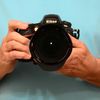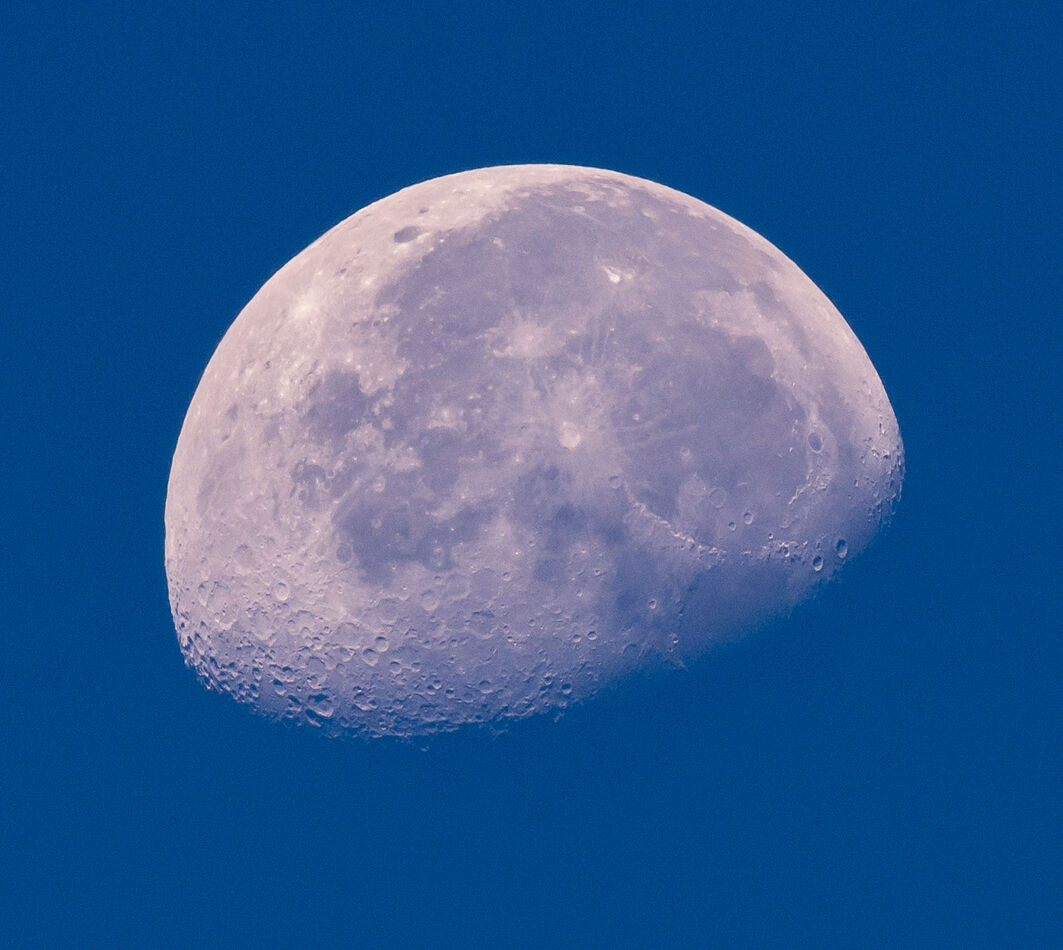Moon Shots
Sep 4, 2023 12:42:47 #
I had an interesting experience, photographing the full moon. I have photographed the moon a number of times, and I have never had any trouble bringing out details by adjusting exposure.
My gear:
1. Nikon D850 with latest firmware.
2. Nikon 200-500 mm zoom.
3. Manfrotto tripod with 410 head.
4. Remote cable.
When I set up my gear, I noticed that my glasses were being fogged up due to the heat and high humidity. I know how to correct that, so that is not my dilemma. However, that caused me problems seeing the icon when I switched to spot metering.
I started with Manual, ISO 64, 1/640, f/11. No matter how high I raised my shutter speed, (I went as high as 1/6400) I could never view the detail on the moon’s surface. I simply got a blown-out white blob. The exposure box was properly over my subject.
But I must say, unknown to me until now, the D850 has two spot metering selections. One is the standard spot meter and the other is what is called, highlight-weighted. Due to my eyeglasses fogging, I did not see the tiny asterisk next to the icon, so I had inadvertently selected the latter. Yet, I actually should have a better exposure using this selection, as the camera adjusts the exposure to keep detail in the brightest highlights.
I’ve shot this camera for a while and I’ve never had any issue with proper exposure. I’ve used this same camera on moon shots before. The only change was using the 200-500 lens, versus my 70-200 lens. No, I did not try another lens, by the time I went through setup and making adjustments, I was worn out.
I’m not sure how to explain this, but I don’t have the feeling this is a service issue. I’ve used this camera, before and since, and I haven’t had any issues with performance. My gut feeling is that this is not a problem inside the camera, but the 6” behind the viewfinder.
I consider myself an experienced shooter, but it seems I am inadvertently doing something wrong. Most modern top-of-the-line cameras today are so sophisticated that just a minor misstep in settings could contribute to this.
Any ideas about what I did wrong?
My gear:
1. Nikon D850 with latest firmware.
2. Nikon 200-500 mm zoom.
3. Manfrotto tripod with 410 head.
4. Remote cable.
When I set up my gear, I noticed that my glasses were being fogged up due to the heat and high humidity. I know how to correct that, so that is not my dilemma. However, that caused me problems seeing the icon when I switched to spot metering.
I started with Manual, ISO 64, 1/640, f/11. No matter how high I raised my shutter speed, (I went as high as 1/6400) I could never view the detail on the moon’s surface. I simply got a blown-out white blob. The exposure box was properly over my subject.
But I must say, unknown to me until now, the D850 has two spot metering selections. One is the standard spot meter and the other is what is called, highlight-weighted. Due to my eyeglasses fogging, I did not see the tiny asterisk next to the icon, so I had inadvertently selected the latter. Yet, I actually should have a better exposure using this selection, as the camera adjusts the exposure to keep detail in the brightest highlights.
I’ve shot this camera for a while and I’ve never had any issue with proper exposure. I’ve used this same camera on moon shots before. The only change was using the 200-500 lens, versus my 70-200 lens. No, I did not try another lens, by the time I went through setup and making adjustments, I was worn out.
I’m not sure how to explain this, but I don’t have the feeling this is a service issue. I’ve used this camera, before and since, and I haven’t had any issues with performance. My gut feeling is that this is not a problem inside the camera, but the 6” behind the viewfinder.
I consider myself an experienced shooter, but it seems I am inadvertently doing something wrong. Most modern top-of-the-line cameras today are so sophisticated that just a minor misstep in settings could contribute to this.
Any ideas about what I did wrong?
Sep 4, 2023 13:20:19 #
larryepage
Loc: North Texas area
texasdigital wrote:
I had an interesting experience, photographing the... (show quote)
I have a D850 and the 200-500 zoom, and have used them to photograph the moon. As a result, I have several ideas. But it would be better if you would post a couple of your exposures. Be sure to click "Store Original." Make sure that the EXIF data is preserved, as well.
Sep 4, 2023 13:23:26 #
Try underexposing the image. The moon is very bright. You should be able to go as slow as 1/125 second and ISO 100. Aperture of f11 is a good place to start. F8 may be as low as you can select as I have the same camera and lens. Image from 9/1/23 attached.
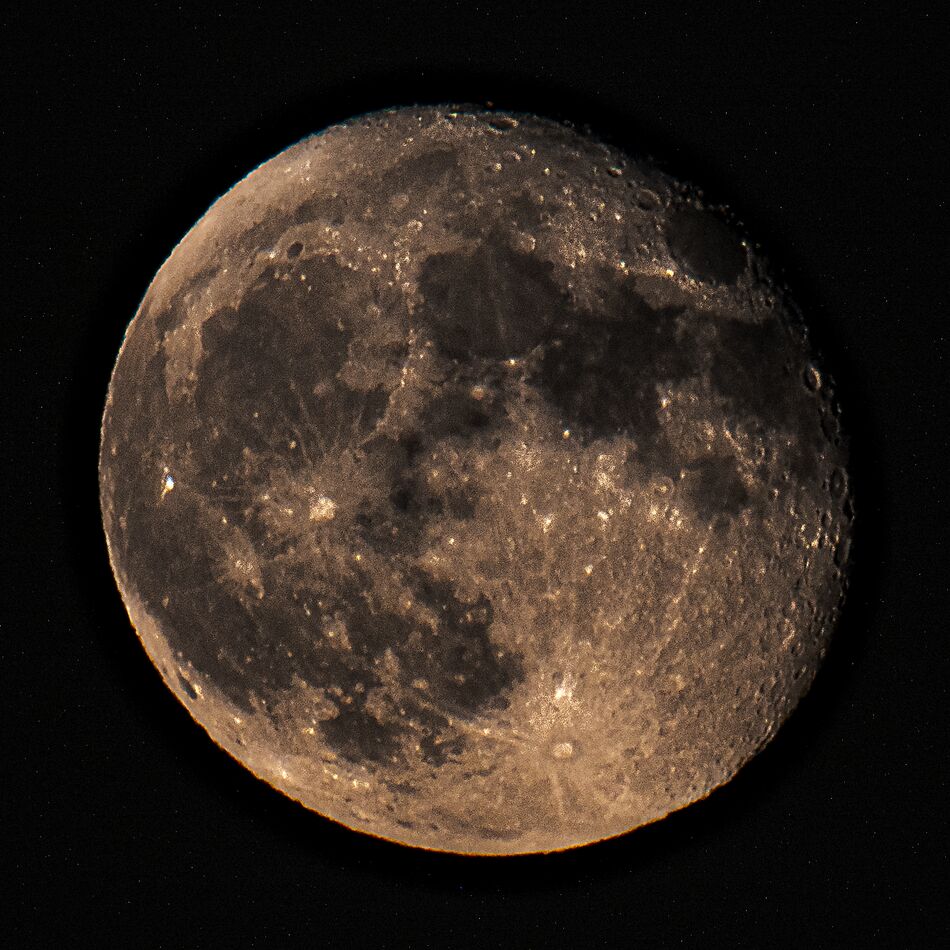
Sep 4, 2023 15:14:13 #
taylorzacre
Loc: Cypress, TX
Years ago, 1971 to be exact, a professor I had in college, teaching photography taught that the moon is reflected sun light and exposure is the same as bright sunlight!
Sep 4, 2023 16:25:34 #
andiamo236 wrote:
Try underexposing the image. The moon is very bright. You should be able to go as slow as 1/125 second and ISO 100. Aperture of f11 is a good place to start. F8 may be as low as you can select as I have the same camera and lens. Image from 9/1/23 attached.
I concur. One of my moon shots is on this thread. I used the Nikon D850 and the 28-300mm zoom at max zoom. (If I'd had my Tamron G2 150-600, I'd have gotten even greater lunar-surface detail. I always go for deep under exposure which helps hugely in defining the darker and lighter sections of the lunar surface. I make ample use of the sliders controlling brightness, contrast the blacks and the whites. I also crop out the blackness, leaving just a small amount of black space surrounding the moon itself. I'll shoot at f/8 at the lowest ISO available and at as-short-as-possible shutter speeds.
Sep 4, 2023 16:36:52 #
Here is a shot I took of the Blue Moon. Z9 with 400mm F4.5 lens @ 1/200 sec., F/7.1 ISO 64. Hand held shot in DX mode and cropped a bit
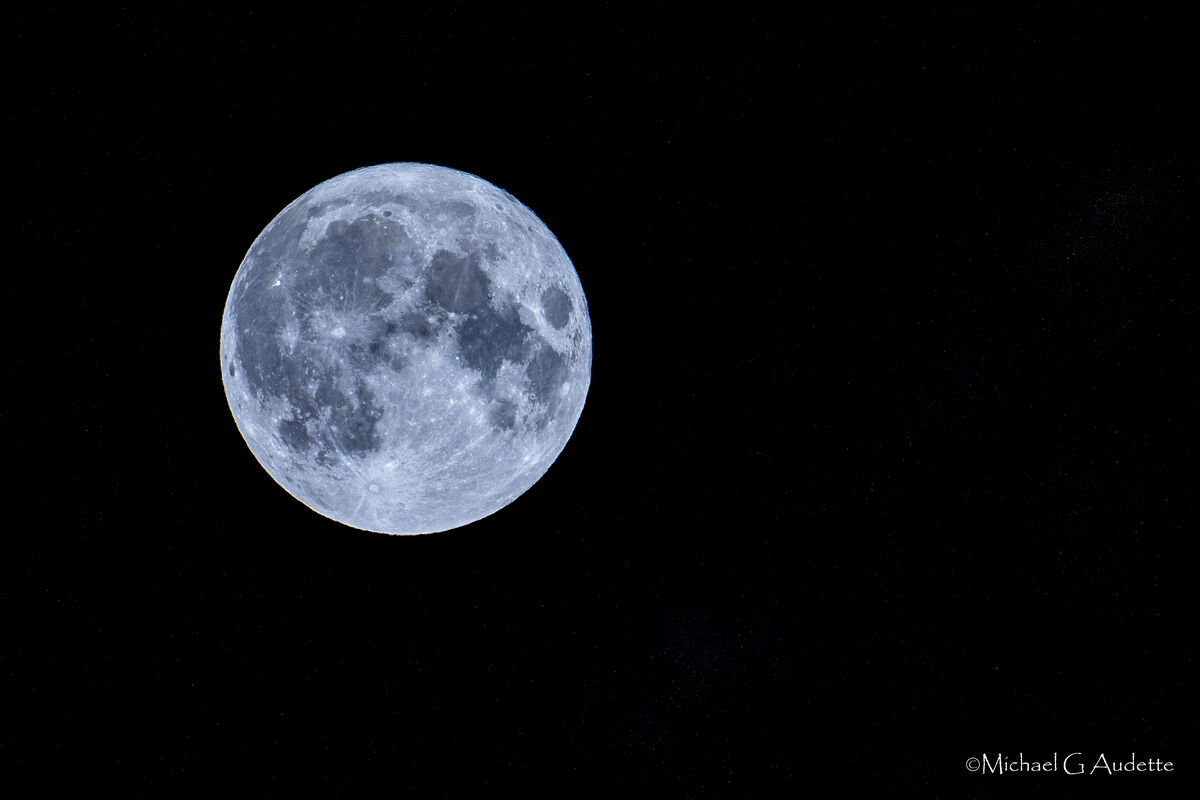
Sep 4, 2023 16:39:57 #
Here is a shot I took of the Blue Moon. Z9 with 400mm F/4.5 at 1/200 sec., F7.1, ISO 64. Shot in DX mode and cropped small amount.
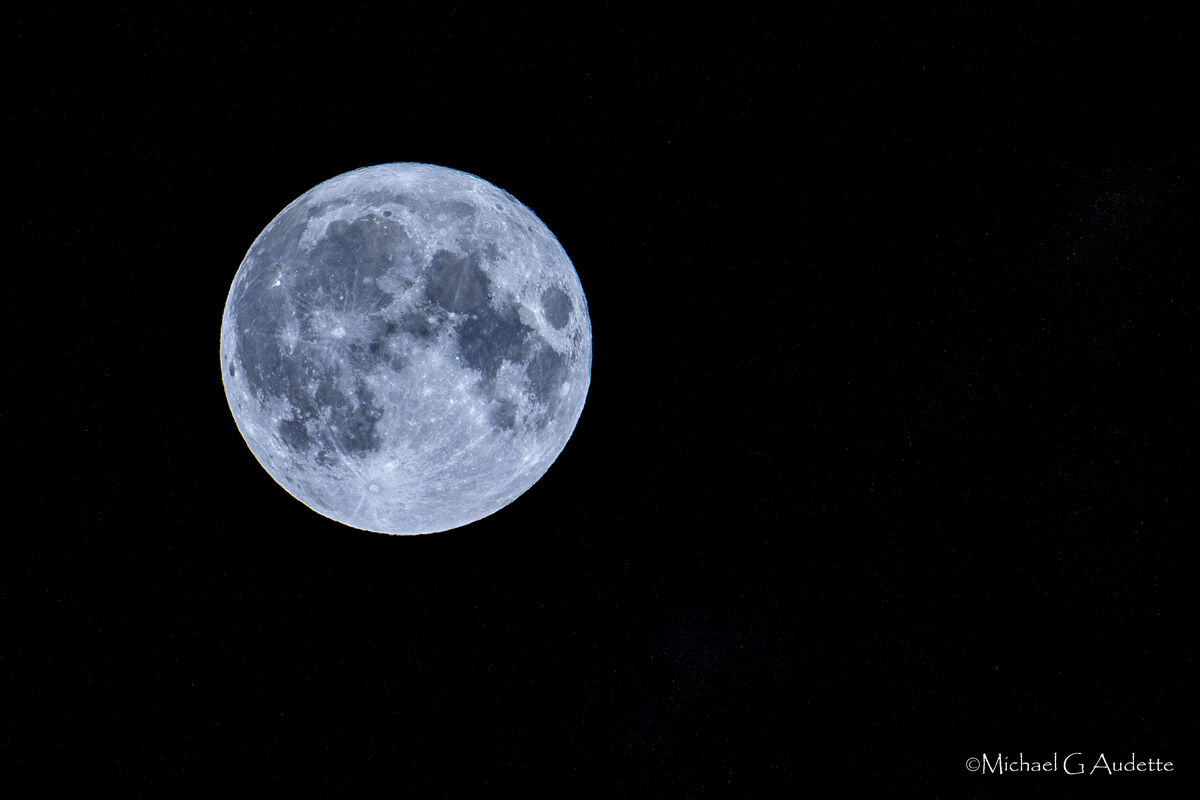
Sep 4, 2023 17:02:01 #
taylorzacre wrote:
Years ago, 1971 to be exact, a professor I had in college, teaching photography taught that the moon is reflected sun light and exposure is the same as bright sunlight!
Since the moon is indeed reflected sunlight sunny 16 would have been a good starting point. At ISO 64 that would have been 1/125 second at f11. I/640 second is 5 times less than the proper exposure. Are you sure the ISO was set on 64?
Sep 4, 2023 17:14:32 #
pvingo
Loc: Bethany, CT
I've used the setting Ansel Adams used in his "Moon Rise over Hernandez" photograph.
1/250 sec. f/stop is the square root of your iso setting.
ex. 1/250sec at f/11 at iso 125. This will yield the moon near zone 5 and grey so open up to 1/60 sec. to brighten it to zone 6 or even 1/30 sec. for a zone 7. Your tastes may vary. Good luck.
1/250 sec. f/stop is the square root of your iso setting.
ex. 1/250sec at f/11 at iso 125. This will yield the moon near zone 5 and grey so open up to 1/60 sec. to brighten it to zone 6 or even 1/30 sec. for a zone 7. Your tastes may vary. Good luck.
Sep 4, 2023 17:19:07 #
Only as sure as the metadata on the file which read as I indicated. The shot was a RAW file and processed in Lightroom with Exposure at 1.93
Sep 4, 2023 17:21:06 #
larryepage wrote:
I have a D850 and the 200-500 zoom, and have used them to photograph the moon. As a result, I have several ideas. But it would be better if you would post a couple of your exposures. Be sure to click "Store Original." Make sure that the EXIF data is preserved, as well.
Thank you, and the other photographers who also responded. I was so disappointed that I didn't save any photographs ... my bad. However, as I said, I have successfully taken moon shots before. I am going to adjust my settings before going outside and I'm trying this again. Also, if I get the same results, I'll mount my 70-200mm and see what results I get. While I don't believe it is the lens, I've shot enough to know you can't always be sure.
I'll let y'all know my results.
Larry
Sep 4, 2023 17:35:28 #
larryepage
Loc: North Texas area
Oops...looks like our posts crossed in transit. I'll leave this anyway, just in case it might be of some help.
Answers so far focus on exposure, which might be the problem, especially if you accidentally left Auto ISO turned on. Even with that, Highlight Weighted Metering should have delivered proper exposure, so I think the problem may lie somewhere else. (I'd actually expect underexposure with Auto Iso.)
You are in a fairly humid part of Texas, which doesn't favor night photography. Specifically, you describe cleaning condensation from your eyeglasses, but did you check for clouding on your lens? It could have affected either the front or rear element or both. Zooming that 200-500 out to 500mm would have drawn humid night air inside your lens, and could have led to condensation on the rear element.
Focus could also have been a problem. Did you use Manual Focus? While that lens can easily autofocus on the limb (edge) of the moon at 500mm, it could also get completely confused and mess up altogether.
Again...without being able to see and read, we are all just guessing. If you can post, we can be more specific.
Answers so far focus on exposure, which might be the problem, especially if you accidentally left Auto ISO turned on. Even with that, Highlight Weighted Metering should have delivered proper exposure, so I think the problem may lie somewhere else. (I'd actually expect underexposure with Auto Iso.)
You are in a fairly humid part of Texas, which doesn't favor night photography. Specifically, you describe cleaning condensation from your eyeglasses, but did you check for clouding on your lens? It could have affected either the front or rear element or both. Zooming that 200-500 out to 500mm would have drawn humid night air inside your lens, and could have led to condensation on the rear element.
Focus could also have been a problem. Did you use Manual Focus? While that lens can easily autofocus on the limb (edge) of the moon at 500mm, it could also get completely confused and mess up altogether.
Again...without being able to see and read, we are all just guessing. If you can post, we can be more specific.
Sep 4, 2023 17:42:14 #
larryepage wrote:
Answers so far focus on exposure, which might be t... (show quote)
All are good possibilities. Condensation is definitely a likely candidate. I did use manual focus, however, I am not 100% sure I took it off of auto ISO. I had been experimenting with auto ISO and it is possible I failed to take it off. I know the problem I had seeing the settings with glasses fogged up, so I have to consider that I did not remove auto ISO.
Again, I am trying this again. It won't be a full moon, but that shouldn't matter. In fact, I've read where partial moons are more interesting. I'll post when I shoot again.
Larry
Sep 4, 2023 18:11:22 #
texasdigital wrote:
All are good possibilities. Condensation is defin... (show quote)
Partial moons can indeed be very interesting. Check out the craters in this daytime shot.
Sep 4, 2023 18:22:06 #
MG Audet wrote:
Here is a shot I took of the Blue Moon. Z9 with 400mm F/4.5 at 1/200 sec., F7.1, ISO 64. Shot in DX mode and cropped small amount.
I absolutely love this shot. If not the best, certainly one of the finest moon alone shots I have ever seen. Great composition. An ice blue moon indeed. It grabbed me from the moment I saw it. Wow!!
If you want to reply, then register here. Registration is free and your account is created instantly, so you can post right away.

